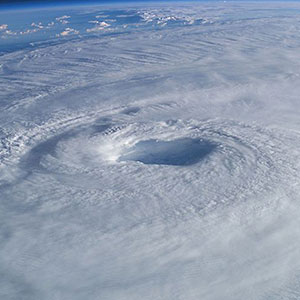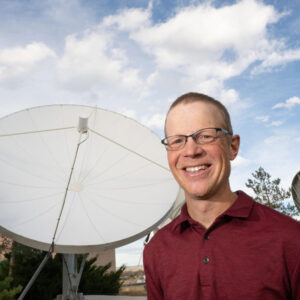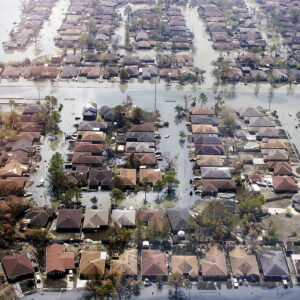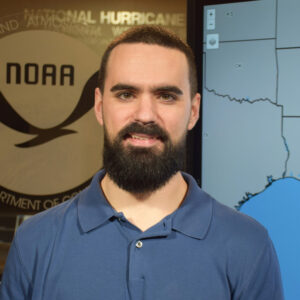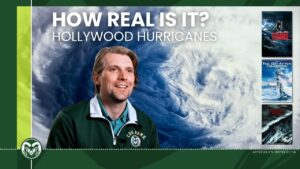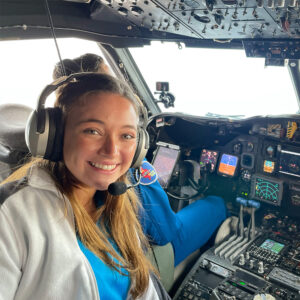Inside the storm
‘Flight scientist in training’ describes what it’s like to fly into a hurricane
story by Jayme DeLoss
published July 11, 2024
Colorado State University grad student Angelie Nieves Jiménez has experienced hurricanes from above, below and within. In August 2023, she flew into Hurricane Franklin on a research and reconnaissance mission with the National Oceanic and Atmospheric Administration’s Hurricane Hunters.
Hurricane Maria, which devastated her Caribbean island home of Puerto Rico in 2017, motivated Nieves Jiménez to study tropical storms to understand the factors that lead to extreme precipitation. Flooding due to extreme precipitation is one of the major causes of death during hurricanes.
As a graduate research assistant on Professor Michael Bell’s Tropical Weather and Climate Research Team – the team responsible for CSU’s renowned hurricane forecast – Nieves Jiménez studies tropical cyclone rapid intensification and extreme rainfall to improve forecasts and reduce risks to life and property.
Data gathered inside a storm can’t be beaten, so Nieves Jiménez was eager to fly with NOAA scientists at the first opportunity. She shared her account of being a flight scientist in training in this Q&A for SOURCE.
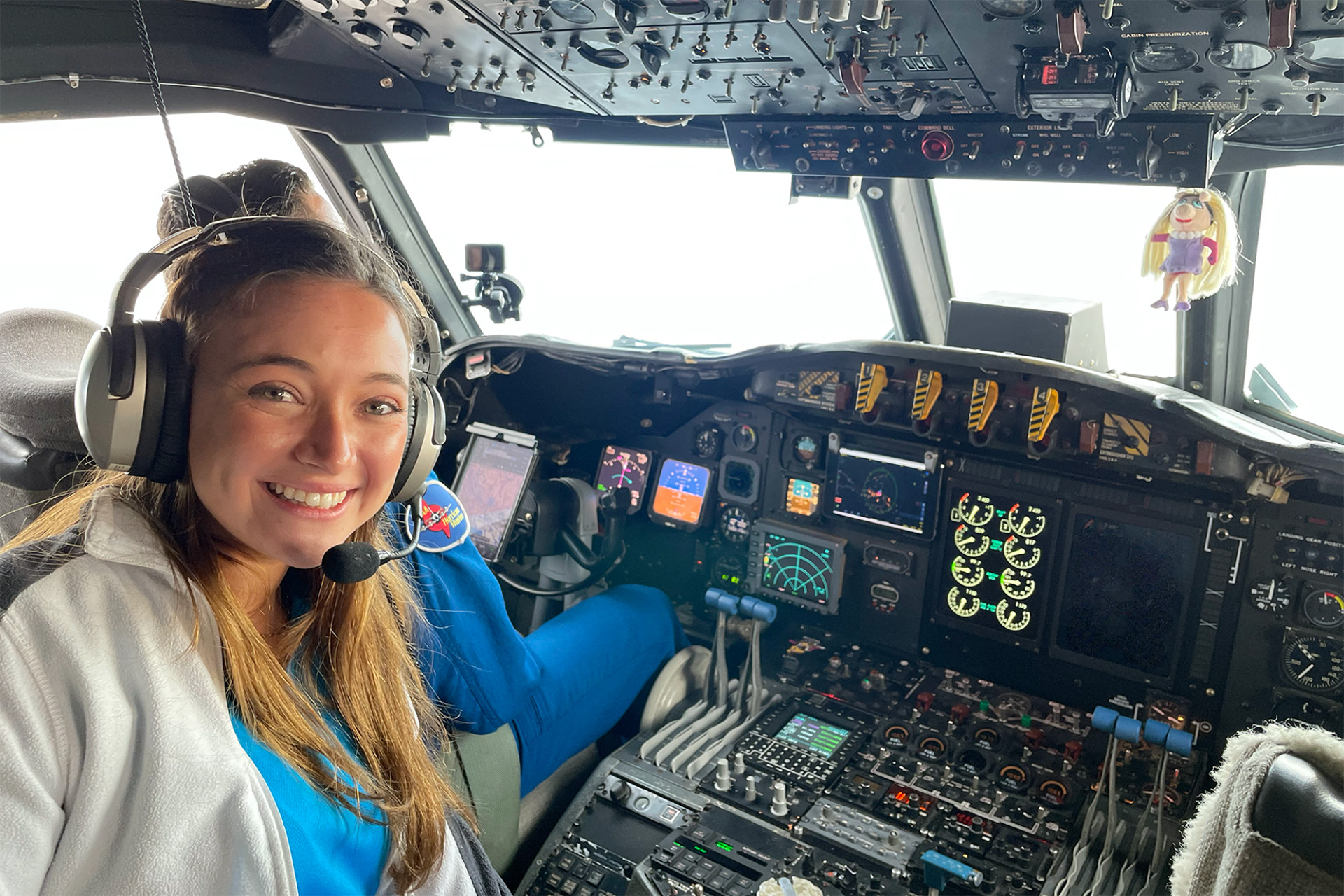
What is it like to fly into a hurricane?!
Flying into a hurricane is a thrilling and memorable experience but can also be a very bumpy and long (8- to 10-hour) ride. You must be mentally and physically prepared; flying into a hurricane is not for everyone.
The bumpiness of the flight depends on the storm’s strength and the reconnaissance mission path. Seat belts must be worn at all times when approaching the storm, because there can be updrafts and downdrafts that feel like a roller coaster.
Aboard the aircraft, you can also experience extremely cold temperatures to counteract the heat released by the instrumentation.
Were you scared?
Not at all! I was more excited than nervous since I was surrounded by scientists I looked up to, and it was a dream come true to have this opportunity. However, I had to prepare mentally to control my emotions and respect the system I was going into. The most important thing is to trust the team on board since they have experience and are leading the efforts.
"I was more excited than nervous since I was surrounded by scientists I looked up to, and it was a dream come true to have this opportunity."
Angelie Nieves Jiménez
NOAA’s Hurricane Hunter pilots undergo extensive preparation before flying any of the NOAA WD-P3 aircraft and acquire many flight hours to be able to fly in these circumstances. All the crew members on board are required to pass Federal Aviation Administration training and other tests to do this job.
Is it safer to fly into a hurricane than to be on the ground during a hurricane?
I have experienced hurricanes from the ground and flown through them. I can say that both scenarios present safety concerns, but preparation and education are key. In the past, the NOAA Hurricane Hunters had close calls; however, now the technology is more advanced to navigate through the system safely. Crew members are experts in the field who guide the aircraft through the safest spots and take into consideration all the variables observed and possible scenarios. On the other hand, being on the ground presents many more risks associated with the storm, such as excessive flooding, storm surge, high winds, tornadoes and landslides. A hurricane flight is typically only eight hours, but hazards on the ground can persist for days, and the aftermath can be felt for weeks, months or even years. While there are risks associated with flying into hurricanes, the scientific and societal benefit of collecting the data is important and helps improve forecasts for people in harm’s way on the ground.
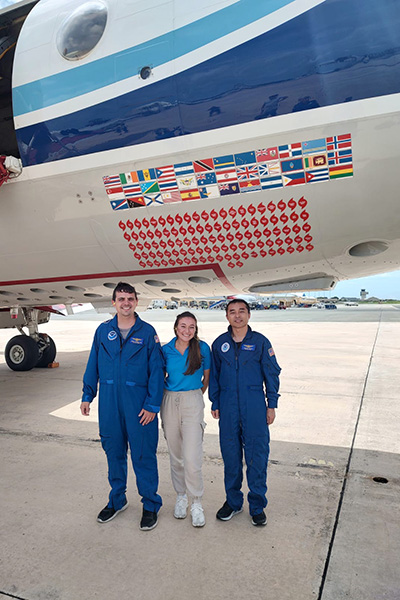
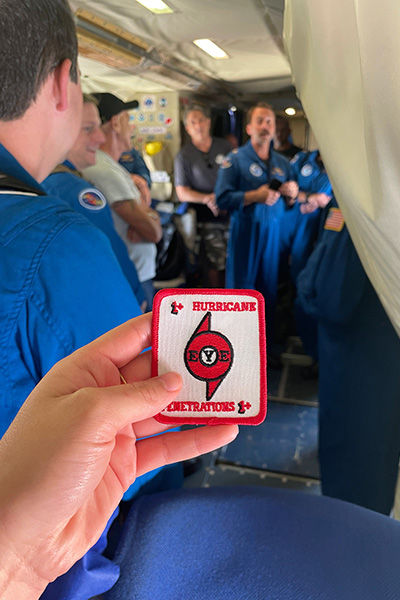
Why do scientists need to fly into hurricanes when we have so many ways of collecting weather data on the ground and using satellites?
A meteorologist’s job is to ensure public safety by preparing the community before a tropical cyclone reaches the vicinity or makes landfall. For this reason, we take all the data available to produce the best forecasts and communicate the science behind the systems. Tropical cyclones form remotely over the ocean, making it challenging to gather in-situ data before reaching land. NOAA Hurricane Hunters and scientists fly into the storm to get critical information about the structure and strength of the system. Measuring variables directly and at different levels aids the National Hurricane Center and reduces track and intensity forecast errors. While satellite observations serve an important purpose by estimating values, collecting exact measurements and incorporating them into models are essential for improving forecasts.
How do you plan to apply your studies?
I will graduate with a master’s degree in atmospheric science from Colorado State University in December. CSU has one of the best atmospheric science programs in the country, and graduating from this institution is an honor. I hope to give back to the community and serve the country by applying all the skill sets acquired during my time at CSU. I hope I can continue contributing to the tropical meteorology community and fly into many more storms, while serving as inspiration to women and underrepresented groups by showing them that it is possible to dream and achieve!
